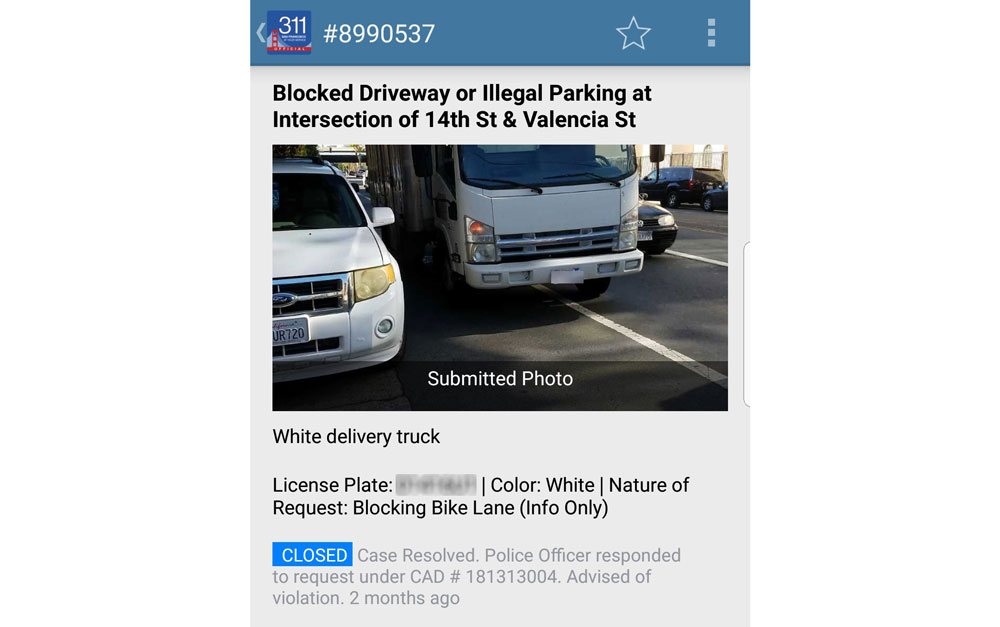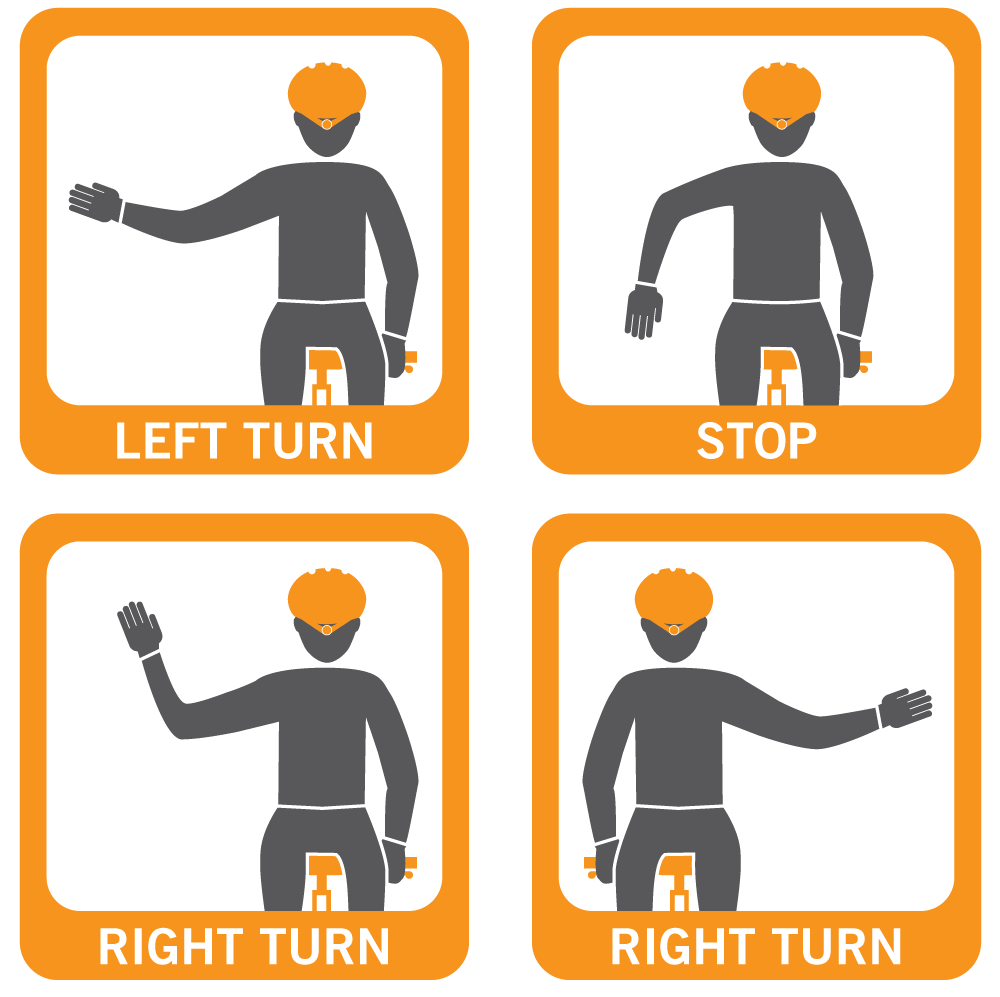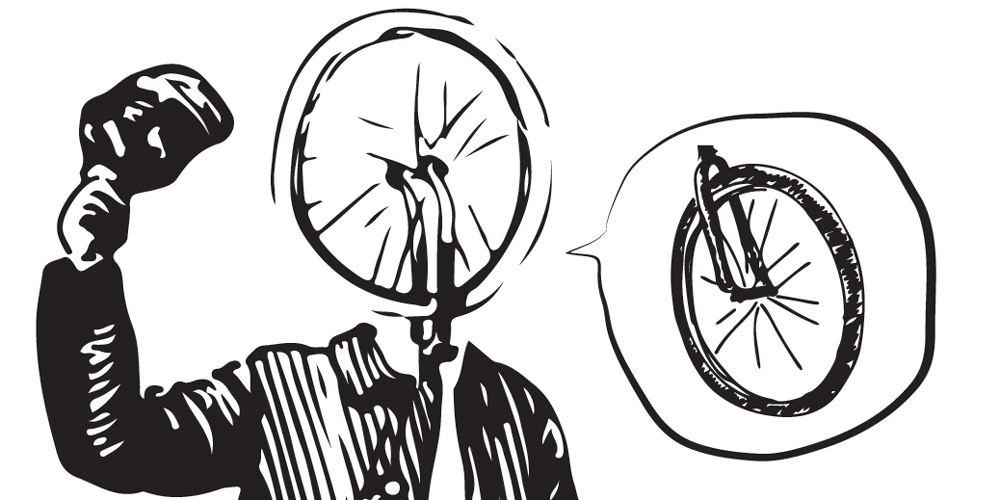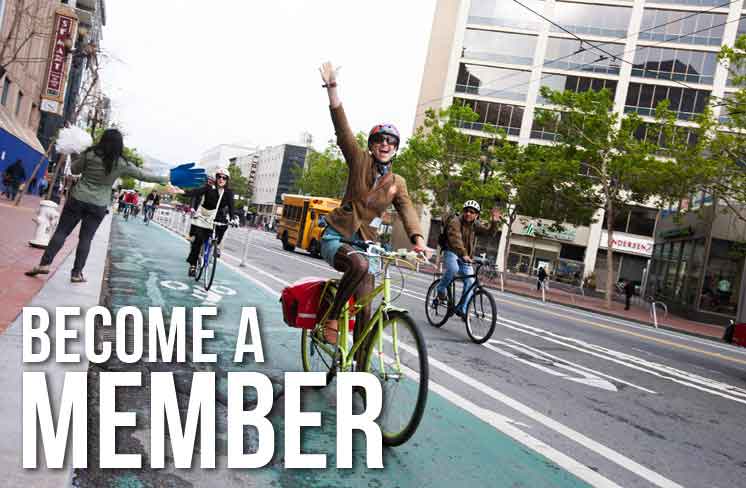Wheel Talk for Wheel People is a monthly advice column written by Christopher White, our adult education program coordinator. Though bikes, biking and getting around SF are our areas of expertise, feel free to ask anything! To submit your questions, please click here.
Wheel Talk, after many months of frustration that there wasn’t a good way for me to submit complaints about double-parked cars and trucks blocking bike lanes, I was so excited to try out the new functionality for reporting such incidents on the SF311 app. I’ve been using it for a couple of weeks now, but I notice that, very quickly after I’ve submitted a complaint, the app says the issue has been resolved and that a “Police Officer responded to request” — even though I saw with my own eyes that no officer ever arrived at the scene! Is the City trying to make us think that they’re dealing with this rampant problem without actually lifting a finger? —Enraged All Over Again
Dear Enraged All Over Again: I agree with you wholeheartedly that the “Case Resolved” messages on the SF311 app are extremely misleading. Our thanks go out to everyone who has been tagging the SF Bicycle Coalition on tweets about this issue. When the app tells us that an officer responded, and that someone was “advised of violation”, the implication is clearly that a Parking Control Officer (or PCO) has zoomed up in their little motorized buggy and given the person driving the vehicle a stern admonishment. But it seems that this is almost never what actually happens.

In conversations with the SFMTA, we were informed that, when a bike lane blockage is submitted to the SF311 app, PCOs are not dispatched to the scene. You might be shaking your fist at the screen, shouting, “Why not?” We’re told that there simply aren’t enough PCOs to do so. So why the heck does the app tell us that someone has responded? And is the whole purpose of this new functionality simply to placate those whose safety is compromised by illegal double parking?
Both are good questions. We were told that the true utility of this reporting function is not short-term enforcement of double parking restrictions, but rather that the City can collect actionable data about “hot spots” for bike lane double parking, so that they can use their limited resources to target enforcement on the most problematic areas. Smarter use of limited resources sounds like a logical idea. But then why the confusing “resolved” reports on the SF311 app?
According to the SFMTA, what those reports mean is that an officer has “responded” by recording the data, and that the SFMTA have themselves been “advised of the violation.” I’ll give the benefit of the doubt and not second-guess their motives in putting out these very misleading reports. But your SF Bicycle Coalition is advocating that the app be clearer about what it means for an incident to be “resolved”, while also pursuing many different avenues for addressing the very serious problem of obstructed bike lanes.
Wheel Talk, I am big on signaling my turns. To signal a turn to the right, does it make more sense for the person biking to stick their right arm straight out to the right? Or should we use the old vehicle-driving method of using our left arm cocked at a 90-degree angle? —All for Pointing
Dear All for Pointing: I have not done a scientific study, but I think I’m noticing more and more people on bikes signalling their intentions to turn or stop. Whenever I see it, my little bicycle educator heart sings!

You correctly attribute the bent-left-arm technique of signaling a right-hand turn to vehicle driving. Many people don’t realize the source of that technique, so some history: back before many safety standards for cars were in place, not all cars had flashing turn indicators. Even if your car did have them, they might break. So how were you supposed to let the people behind you know of your intention to turn? Evolution equipped us humans with excellent directional indicators in the form of arms. You could roll down the window and point left to signal a left turn. But what about right? If you just point right, your pointing arm remains in the car, where it will likely remain unseen. Sticking your left arm out the window and bending at the elbow, fingers pointing up, became the agreed-upon hand signal for a right turn.
For those of us on bikes, however, neither passenger seat nor dirty rear windshield blocks people behind us from seeing our right arm. Pointing to the right makes much more intuitive sense then pointing up to communicate a right turn, so I definitely prefer that mode of signalling. However, either one works.
There are some who argue for the bent left arm for a couple of reasons: first, the left arm is closer to vehicle traffic, and the right arm becomes harder to see as someone to the left comes closer. Second, braking with only your front brake (which your left-hand brake lever will activate) could cause overly abrupt stopping, which if very drastic can cause one to flip. To me, the first argument is overpowered by the fact that pointing right simply communicates your intentions more clearly. As for the second argument: fair enough. Remember, though, that signalling is preferred but not mandated, and safety should come first. When choosing whether to use your hands to signal or to activate your brakes, braking safely should always take priority. If you’re going fast enough that you fear flipping if you brake, don’t signal; just use both those hands for braking.


